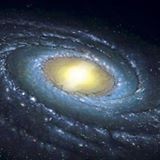Two scientists from Harvard University created a model of how life might have spread from planet to planet. Henry Lin and Abraham Leob believe that life was spread across the galaxy by aliens, similar to how a virus spreads an epidemic.
That kind of thinking is called panspermia, a controversial theory that suggests the building blocks of life reached Earth from some faraway alien world, reports Tech Times. The two researchers then built a model that theorizes life on one planet spreads outward in all direction. It then takes root if it finds a habitable planet while going around a neighboring star.
If such pattern is repeated over time, a series of oases with life would spread throughout the galaxy. Using an everyday phenomenon to further explain their theory, Lin, lead author of the study and from the university's Smithsonian Center for Astrophysics, says, "In our theory, clusters of life form, and overlap like bubbles in a pot of boiling water."
The two add that if the Earth is on the outer edge of one of the expanding bubbles, there might be other worlds that could bear life behind the planet, but not in front of the Earth. That would make the Milky Way galaxy "infected with pockets of life," and with the Earth seeding life, or the other way around, our neighboring planets may also exhibit signs of life and yield extraterrestrial life.
The two scientists would further explain panspermia at the 2015 R&D 100 Awards & Technology Conference. The gathering has 28 sessions with Dean Kamen and Thom Mason, director of the Oak Ridge National Laboratory, as keynote speakers, reports Press Examiner.



























